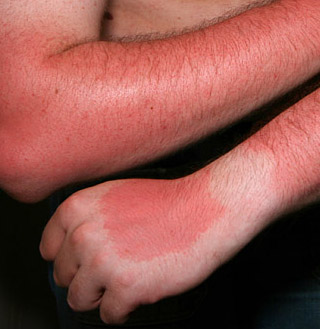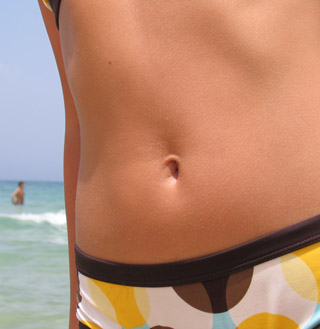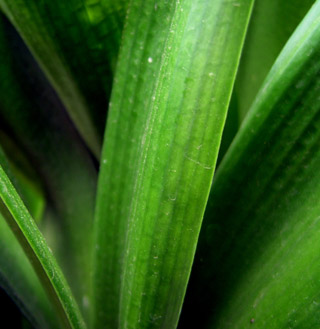sunburns
A sunburn is a burn to the skin produced by overexposure to ultraviolet (UV) radiation, most commonly from the sun's rays. A similar burn can be produced by overexposure to other sources of UV such as from tanning lamps, or occupationally, such as from welding arcs. Exposure of the skin to lesser amounts of UV will often produce a suntan. Common symptoms of sunburn include tenderness, pain, edema, itching, red and/or peeling skin, rash, nausea and fever. Also, a small amount of heat is given off from the burn, giving a warm feeling to the affected area. Sunburns may be first- or second-degree burns.
Sunburn can be life-threatening and is a leading cause of cancer. Sunburn can easily be prevented through the use of sunscreen, clothing (and hats), and by limiting solar exposure, especially during the middle of the day. The only cure for skin burn is slow healing, although skin creams can help ease some of the pain of tender burnt skin.
prevention
It is advisable to consult a UV index to determine what level of protection is necessary. Potential forms of protection include wearing long-sleeved garments or sun-protective clothing which block UV rays, wide-brimmed hats, and using an umbrella when in the sun. Minimization of sun exposure between the hours of 10 a.m. to 3 p.m. is also recommended.
Commercial preparations are available that block UV light, known as sunscreens or sunblocks. These have a Sun Protection Factor (SPF) rating, based on the sunblock's ability to reduce the UVB radiation at the skin: the higher the SPF rating, the greater the protection. It is best to use a broad spectrum sunscreen in order to protect against both UVA and UVB radiation, and apply it 15 to 30 minutes before sun exposure, followed by another reapplication 15 to 30 minutes after the sun exposure begins. Don’t forget to use a waterproof sunscreen if you plan on spending time in the water.
treatment
The progression of the burn is such that typically there is initial redness (erythema), followed by varying degrees of pain, both proportional in severity to the duration and intensity of exposure. After the exposure, skin may turn red in 2 to 6 hours. Pain is usually most extreme 6 to 48 hours after exposure. The burn continues to develop for 24 to 72 hours occasionally followed by peeling skin in 3 to 8 days. Some peeling and itching may continue for several weeks. In more serious cases blistering can occur. Extreme sunburns can be painful to the point of debilitation and may require hospital care.
The best treatment for sunburns is prevention. The next best treatment is time; given a few weeks, they will heal on their own. Immediate, temporary relief can be obtained by putting a cool, wet towel over the affected area, or taking a cold bath or shower. More severe burns may be treated with burn ointments. There are also numerous topical skin products that are sold over-the-counter to relieve the pain of a sunburn with a cooling effect. Many popular products contain aloe, aloe with Lidocane, or vitamin E. In many cases, the application of cold water or ice gives immediate but temporary relief from pain. Aside from topical treatments, the pain from a sunburn may also be helped with an analgesic such as acetaminophen or ibuprofen.
more information
Sunburn First AidKids and Sunburn
The Mayo Clinic (Sunburn Treatment)


